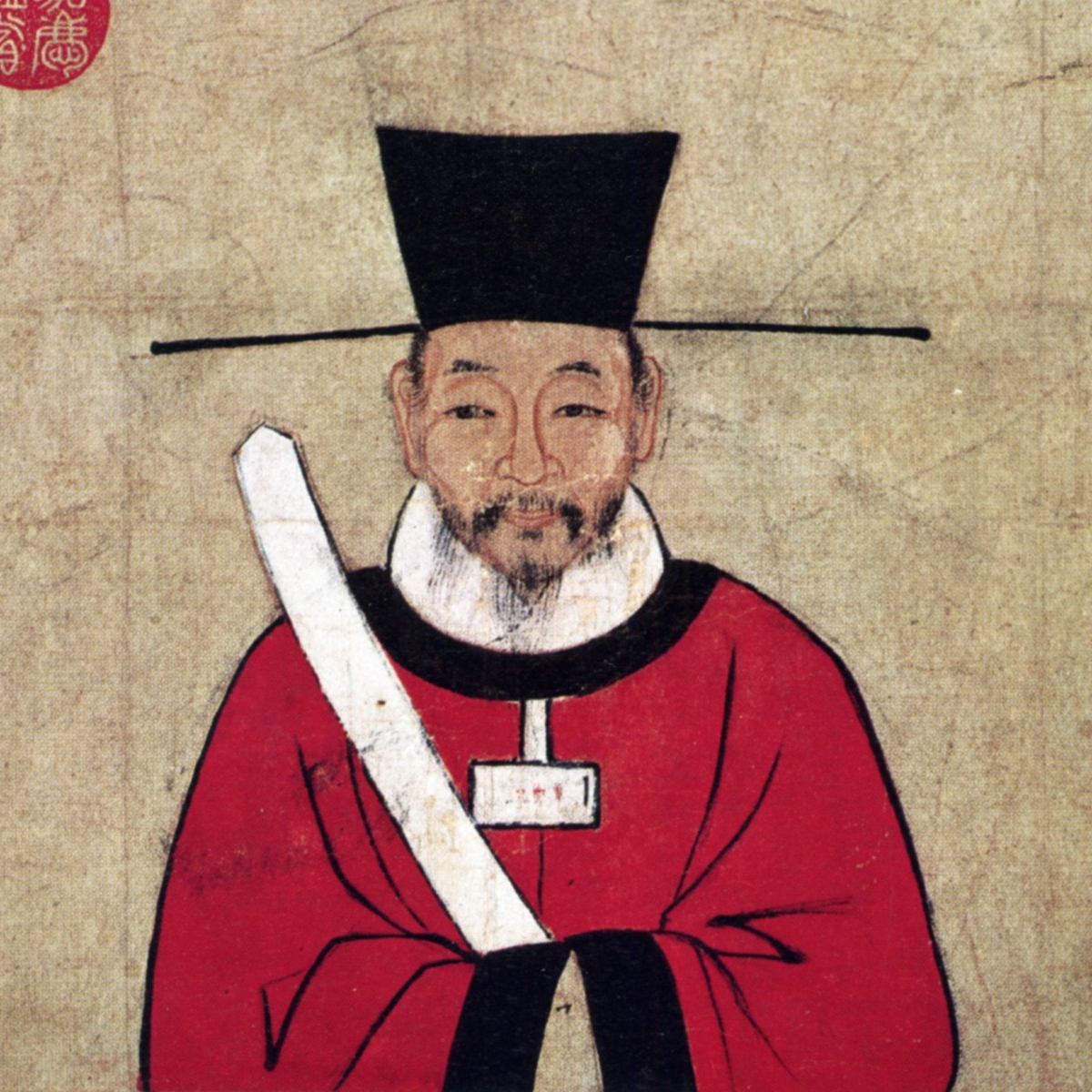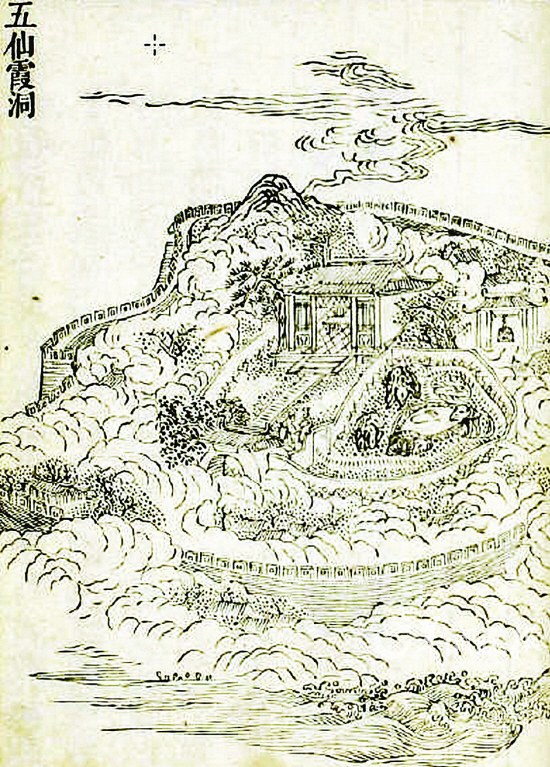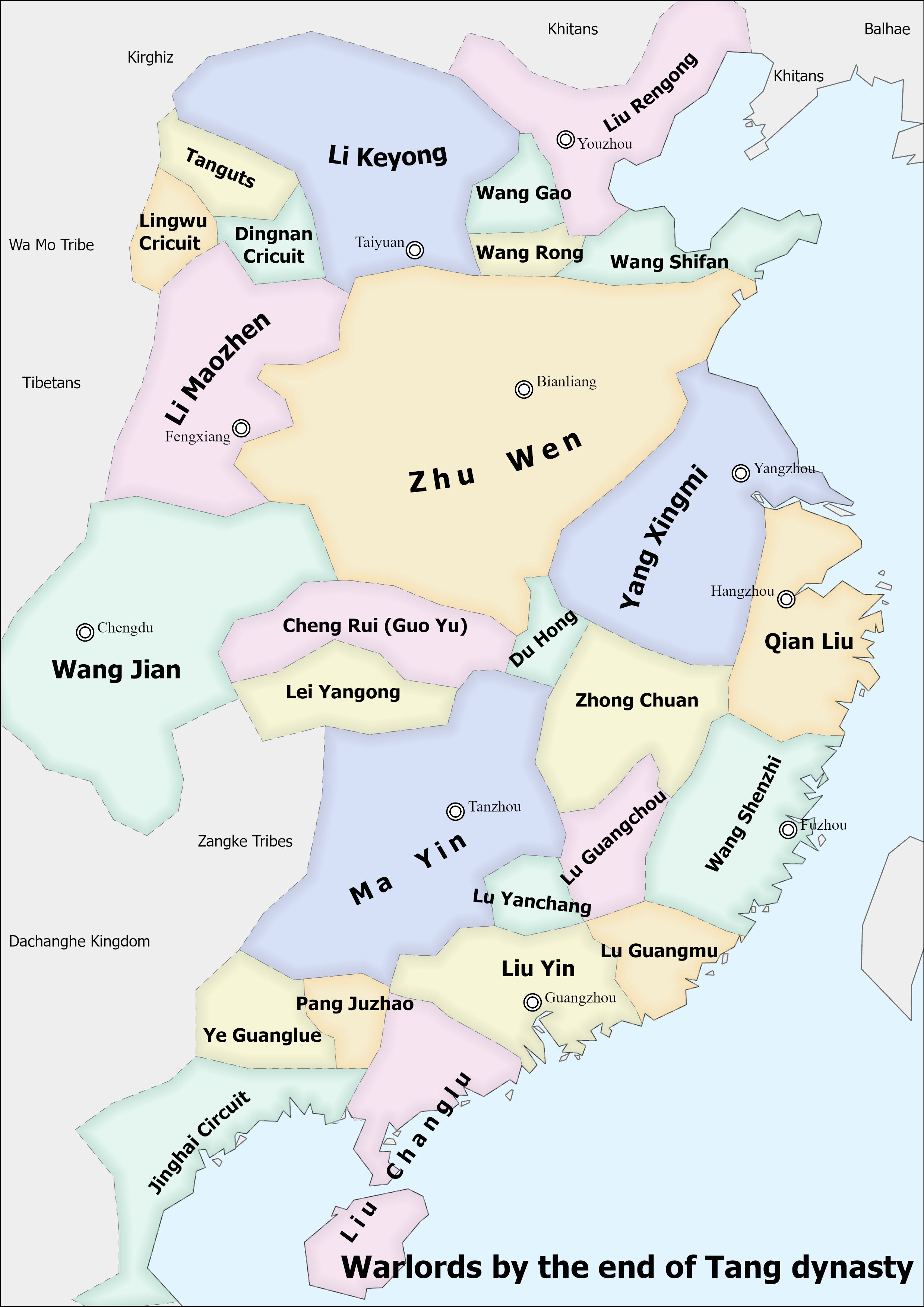|
Li Yantu
Li Yantu (李彥圖) (died 913) was a ruler of Qian Prefecture (虔州, in modern Ganzhou, Jiangxi) from 912 to 913, early in the Chinese Five Dynasties and Ten Kingdoms period. Nearly nothing is known about Li Yantu's personal background, including where or when he was born. In 912, when Li Qiu, who had seized control of Qian Prefecture after assassinating the prior ruler Lu Yanchang and subsequently was given the title of defender of Qian by Zhu Wen, died, Li Yantu took over by himself and apparently took the title of defender of Qian as well. (It is not clear from the extant historical records whether he received official sanction from Later Liang and/or its rival Wu, to whom Lu had previously submitted.) After Li Yantu's seizure of power, the senior officer Tan Quanbo, a long-time strategist for Lu Yanchang's father Lu Guangchou, whom Li Qiu had considered killing, claimed to be seriously ill and retired from military service. Upon hearing of Tan's illness, Liu Yan ... [...More Info...] [...Related Items...] OR: [Wikipedia] [Google] [Baidu] |
Ganzhou
Ganzhou (), alternately romanized as Kanchow, is a prefecture-level city in the south of Jiangxi province, China, bordering Fujian to the east, Guangdong to the south, and Hunan to the west. Its administrative seat is at Zhanggong District. History Early settlement and administration In 201 CE, Emperor Gaozu of Han established a county in the territory of modern Ganzhou. In 236 CE, during the Three Kingdoms period, the was established in the area. In the early years, Han Chinese settlement and authority in the area was minimal and largely restricted to the Gan River basin. The river, a tributary of the Yangtze via Poyang Lake, provided a route of communication from the north as well as irrigation for rice farming. Sui dynasty In 589 CE, during the Sui dynasty, the was abolished, and the area was reorganized as Qianzhou. During the Song, immigration from the north bolstered the local population and drove local aboriginal tribes into admixing with the northerners. After t ... [...More Info...] [...Related Items...] OR: [Wikipedia] [Google] [Baidu] |
Liu Yan (emperor)
Liu Yan (; 889 – 10 June 942), né Liu Yan (劉巖), also named Liu Zhi (劉陟) (from c. 896 to 911) and briefly as Liu Gong (劉龔), also known by his temple name as the Emperor Gaozu of Southern Han (南漢高祖), was the first Emperor of China, emperor of the Chinese Southern Han, Southern Han dynasty, one of the Five Dynasties and Ten Kingdoms period#Ten Kingdoms, Ten Kingdoms during the Five Dynasties and Ten Kingdoms period. Background Liu Yan was born in 889, during the reign of Emperor Zhaozong of Tang. His father Liu Zhiqian (also known as Liu Qian) was then the prefect of Feng Prefecture (封州, in modern Fengkai County, Fengkai, Guangdong) and was married to a Lady Wei, the niece of Wei Zhou (韋宙), a prior military governor (''Jiedushi'') of Lingnan East Circuit (嶺南東道, headquartered in modern Guangzhou, Guangdong), which Feng Prefecture belonged to. However, he also secretly had a concubine outside the home, a Lady Duan, and it was to Lady Duan tha ... [...More Info...] [...Related Items...] OR: [Wikipedia] [Google] [Baidu] |
9th-century Births
The 9th century was a period from 801 (represented by the Roman numerals DCCCI) through 900 (CM) in accordance with the Julian calendar. The Carolingian Renaissance and the Viking raids occurred within this period. In the Middle East, the House of Wisdom was founded in Abbasid Baghdad, attracting many scholars to the city. The field of algebra was founded by the Muslim polymath al-Khwarizmi. The most famous Islamic scholar Ahmad ibn Hanbal was tortured and Imprisonment, imprisoned by Abbasid official Ahmad ibn Abi Du'ad during the reign of Abbasid caliph al-Mu'tasim and caliph al-Wathiq. In Southeast Asia, the height of the Mataram Kingdom happened in this century, while Burma would see the establishment of the major kingdom of Pagan Kingdom, Pagan. Tang china, Tang China started the century with the effective rule under Emperor Xianzong of Tang, Emperor Xianzong and ended the century with the Huang Chao#Rebellions, Huang Chao rebellions. In America, the Maya civilization, Ma ... [...More Info...] [...Related Items...] OR: [Wikipedia] [Google] [Baidu] |
Zizhi Tongjian
The ''Zizhi Tongjian'' (1084) is a chronicle published during the Northern Song dynasty (960–1127) that provides a record of Chinese history from 403 BC to 959 AD, covering 16 dynasties and spanning almost 1400 years. The main text is arranged into 294 scrolls (), each equivalent to a chapter—totaling around 3 million Chinese characters. In 1065, Emperor Yingzong of Song commissioned his official, Sima Guang (1019–1086), to lead a project to compile a Universal history (genre), universal history of China, and granted him funding and the authority to appoint his own staff. His team took 19 years to complete the work and in 1084 it was presented to Emperor Yingzong's successor Emperor Shenzong of Song. It was well-received and has proved to be immensely influential among both scholars and the general public. Endymion Wilkinson regards it as reference quality: "It had an enormous influence on later Chinese historical writing, either directly or through its many a ... [...More Info...] [...Related Items...] OR: [Wikipedia] [Google] [Baidu] |
Chu (Ten Kingdoms)
Chu (), known in historiography as Ma Chu () or Southern Chu (), was a dynastic state of China that existed from 907 to 951. It is counted as one of the Ten Kingdoms during the Five Dynasties and Ten Kingdoms period of Chinese history. Founding Ma Yin was named regional governor by the Tang court in 896 after fighting against a rebel named Yang Xingmi. He declared himself as the Prince of Chu with the fall of the Tang dynasty in 907. Ma's position as Prince of Chu was confirmed by the Later Tang in the north in 927 and was given the posthumous title of King Wumu of Chu. Territories The capital of the Chu Kingdom was Changsha ( Tanzhou). The kingdom ruled over present-day Hunan and northeastern Guangxi. Economy Chu was peaceful and prosperous under Ma Yin's rule, exporting horses, silk and tea. Silk and lead coinage were often used as currency, particularly with external communities which would not accept other coinage of the land. Taxation was low for the peasantry and mer ... [...More Info...] [...Related Items...] OR: [Wikipedia] [Google] [Baidu] |
Shaoguan
Shaoguan is a prefecture-level city in northern Guangdong Province ( Yuebei), South China, bordering Hunan to the northwest and Jiangxi to the northeast. It is home to the mummified remains of the sixth Zen Buddhist patriarch Huineng. Its built-up (or metro) area made up of Zhenjiang, Wujiang and Qujiang urban conurbated districts was home to 1,028,460 inhabitants as of the 2020 census. History Shaozhou or Seochew was a prefecture under the Tang and Song. In 1589, Matteo Ricci relocated his mission housethe first ever Jesuit mission in mainland Chinato Shaoguan after a fallout with the authorities in Zhaoqing. He remained in Shaoguan for a few years, eventually benefiting from Shaoguan's location on the important north–south travel route to establish connections with traveling dignitaries that allowed him to move north, to Nanchang, Nanjing, and Beijing. During World War II the city, then called Kukong, was the temporary capital of Guangdong Province. In June 2009, Uyg ... [...More Info...] [...Related Items...] OR: [Wikipedia] [Google] [Baidu] |
Guangdong
) means "wide" or "vast", and has been associated with the region since the creation of Guang Prefecture in AD 226. The name "''Guang''" ultimately came from Guangxin ( zh, labels=no, first=t, t= , s=广信), an outpost established in Han dynasty near modern Wuzhou, whose name is a reference to an order by Emperor Wu of Han to "widely bestow favors and sow trust". Together, Guangdong and Guangxi are called ''Liangguang, Loeng gwong'' ( zh, labels=no, first=t, t=兩廣, s=两广 , p=liǎng guǎng) During the Song dynasty, the Two Guangs were formally separated as ''Guǎngnán Dōnglù'' ( zh, first=t, t=廣南東路, s=广南东路, l=East Circuit (administrative division), Circuit in Southern Guang , labels=no) and ''Guǎngnán Xīlù'' ( zh, first=t, t=廣南西路, s=广南西路, l=West Circuit (administrative division), Circuit in Southern Guang , labels=no), which became abbreviated as ''Guǎngdōng Lù'' ( zh, first=t, t=廣東路, s=广东路 , labels=no) and ''Guǎngxī Lù ... [...More Info...] [...Related Items...] OR: [Wikipedia] [Google] [Baidu] |
Guangzhou
Guangzhou, Chinese postal romanization, previously romanized as Canton or Kwangchow, is the Capital city, capital and largest city of Guangdong Provinces of China, province in South China, southern China. Located on the Pearl River about northwest of Hong Kong and north of Macau, Guangzhou has a history of over 2,200 years and was a major terminus of the Silk Road. The port of Guangzhou serves as a transportation hub for China's fourth largest city and surrounding areas, including Hong Kong. Guangzhou was captured by the United Kingdom, British during the First Opium War and no longer enjoyed a monopoly after the war; consequently it lost trade to other ports such as Hong Kong and Shanghai, but continued to serve as a major entrepôt. Following the Second Battle of Chuenpi in 1841, the Treaty of Nanking was signed between Robert Peel, Sir Robert Peel on behalf of Queen Victoria and Lin Zexu on behalf of Daoguang Emperor, Emperor Xuanzong and ceded British Hong Kong, Hong Kon ... [...More Info...] [...Related Items...] OR: [Wikipedia] [Google] [Baidu] |
Lu Guangchou
Lu Guangchou (盧光稠) (died 910) was a warlord late in the Chinese Tang dynasty and who nominally submitted to both the succeeding Later Liang and Later Liang's rival Wu after the end of Tang, who controlled the Qian Prefecture (虔州, in modern Ganzhou, Jiangxi) region from 885 to his death in 910. Background and seizure of Qian Prefecture It is not known when Lu Guangchou was born, but it is known that he was from Nankang (南康, in modern Ganzhou, Jiangxi). It was said that Lu had an impressive physique, but was not particularly talented; nevertheless, he impressed fellow Nankang native Tan Quanbo. In the late Tang dynasty, when the southern parts of the Tang realm were overrun by agrarian rebels, Tan encouraged Lu to start a rebellion as well, and Lu did so. When the group of rebels that they gathered wanted to support Tan as their leader instead, Tan yielded the leadership position to Lu, and further threatened to execute those who would not follow Lu's orders, bri ... [...More Info...] [...Related Items...] OR: [Wikipedia] [Google] [Baidu] |
Jiangxi
; Gan: ) , translit_lang1_type2 = , translit_lang1_info2 = , translit_lang1_type3 = , translit_lang1_info3 = , image_map = Jiangxi in China (+all claims hatched).svg , mapsize = 275px , map_caption = Location of Jiangxi in China , coordinates = , subdivision_type = Country , subdivision_name = China , named_for = Jiangnanxi Circuit () , seat_type = Capital , seat = Nanchang , seat1_type = Largest city , seat1 = Ganzhou , parts_type = Divisions , parts_style = para , p1 = 11 prefectures , p2 = 99 counties , p3 = 1549 townships , government_type = Province , governing_body = Jiangxi Provincial People's Congress , leader_title = Party Secretary , leader_name = Yin Hong , leader_title1 = Congress chairman , leader_name1 = Yin Hong , leader_title2 = Governor ... [...More Info...] [...Related Items...] OR: [Wikipedia] [Google] [Baidu] |
Tan Quanbo
Tan Quanbo (譚全播) (857 - died 918?''Spring and Autumn Annals of the Ten Kingdoms'' (十國春秋)vol. 8/ref>''Zizhi Tongjian'', vol. 270. or 950The Yihuang Tan Clan Genealogy (宜黃譚氏族譜) states that he was born in the 11th year of the Dazhong era of Emperor Xuanzong of Tang (唐宣宗大中十一年) and died in the 8th year of the Baoda era of Emperor Yuanzong of Southern Tang (南唐元宗保大八年).) was a ruler of Qian Prefecture (虔州, in modern Ganzhou, Jiangxi) from 913 to 918, early in the Chinese Five Dynasties and Ten Kingdoms period. He was a long-time strategist of Lu Guangchou, who ruled Qian Prefecture for 25 years, and after several transitional rulers after Lu's death was supported by the people to govern the prefecture. In 918, he was defeated by Wu forces, which took over Qian. He died shortly after. Background Tan Quanbo was born in 857 in Nankang (南康, in modern Ganzhou, Jiangxi). It was said that Tan was brave and intelligent in h ... [...More Info...] [...Related Items...] OR: [Wikipedia] [Google] [Baidu] |






